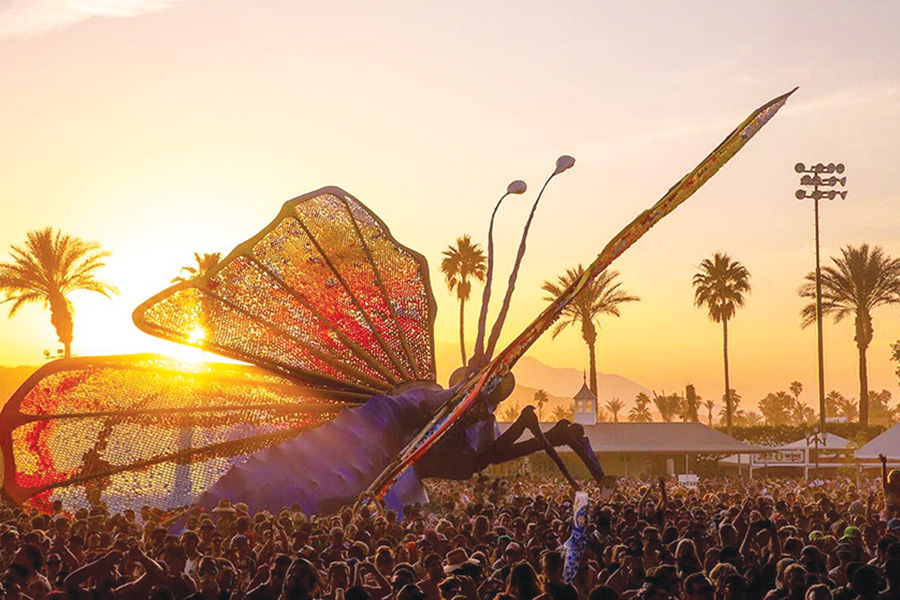We reported recently on our e-newsletter that GPT’s Highpoint in Melbourne hosted a Coachella inspired ‘Kidchella’ festival. Savvy brands, as Susanne Pini tells us, are aligning with festivals to reach millennials – it’s fascinating stuff!
With painted VW buses, talk of peace and free love and other reminders of the Woodstock era replaced by advertising and corporate sponsorships, the idea of festival culture has clearly changed and something that was once a counterculture, hippie escape from the daily rat race is nowadays a key part in mainstream society and a rite of passage for many young people.
In today’s experience-driven economy, festivals are no longer seen as mere entertainment – they represent lifestyles, and by aligning with these lifestyles, savvy brands can reach the most desirable group of consumers, the millennials. Growing up as digital natives, millennials simply tune out of traditional retail and advertising, instead placing more value on experiences over products.
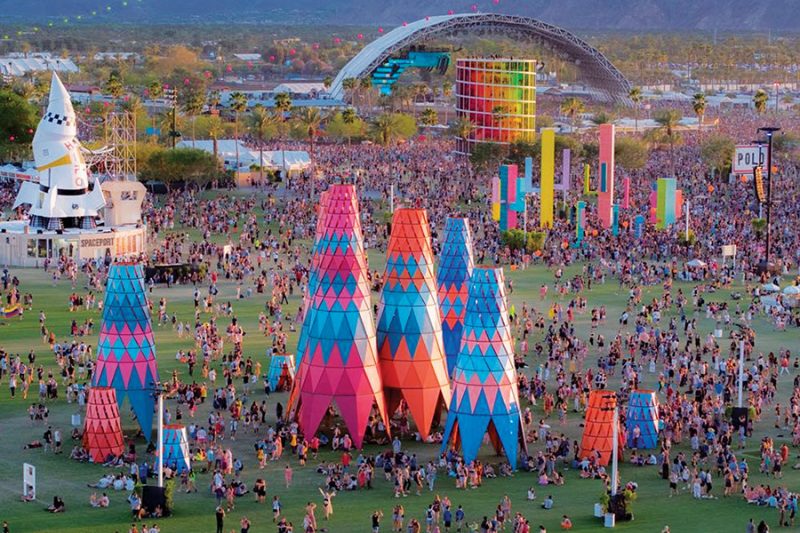
As one of the few commercial activities that are reliant on experience for their existence, a festival has the power to form an emotional bond that stays with attendees long after the last tune. This ability to connect and convert has seen massive shifts in the way brands work with festivals and in the way festivals themselves market and fulfill their offering.
The festival landscape is a unique, almost perfect experiential environment for marketing with potentially thousands of the target demographic in a confined space for a prolonged period of time. Attendees are also more likely to be more interested in smart and relevant brand communication than they typically would be otherwise, as confirmed in the recent study by AEG and Momentum Worldwide, where 93% of festival goers surveyed said that they liked the brands that sponsored such events and 80% said that they were more likely to purchase a product after having had that music experience.
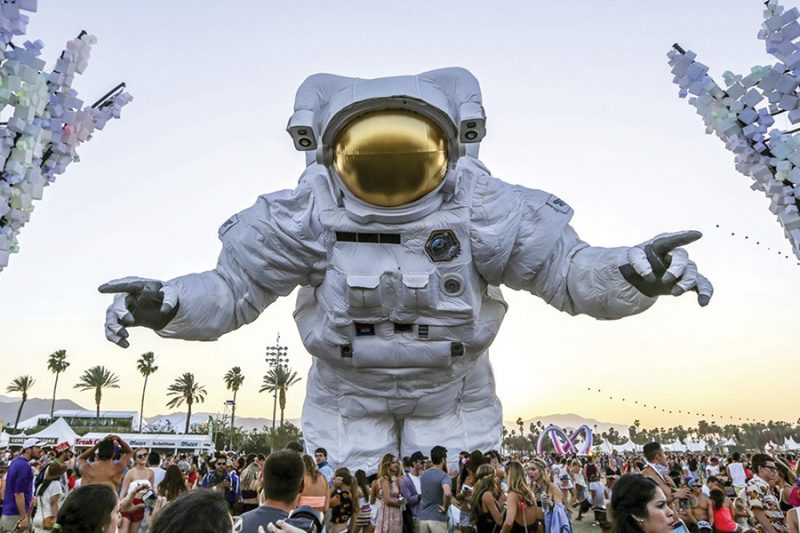
Coachella installation
Rise and rise of festival marketing
Music festivals have been around for decades but the popularity of events like Coachella, Lollapalooza and Glastonbury has exploded in the past decade.
To put it in perspective, while actual music sales plummeted, PwC predicts that live music revenue worldwide will top $30 billion by 2022, growing 3.3% per year.
Evidently, the connection that a music-going experience provides is seemingly inherent and people still want to come together and feel a real connection to one another.
With more popularity, comes more exposure, hence sponsorship spent on music events in 2017 was US$1.54 billion, up 4.8% from the year before.
Nevertheless, while festivals offer a fantastic branding opportunity, there’s a fine line between cutting through the clutter and adding to the noise. Festival attendees today are more informed, socially connected and have higher expectations than ever before so finding a way to stand out and make a true emotional and credible connection with a consumer is essential – simply pitching up and being seen is not enough.

Wrangler laundry at Lowlands festival
Different festivals will attract different segments. For example, there is an increasing amount of niche boutique festivals complete with the likes of artisan food trucks, handcrafted gin and poetry tents. Wrangler capitalised on this trend superbly at Holland’s Lowlands festival with the opening of a mobile laundromat, offering festival-goers a much-needed service – free laundry. The brand offered a full service in which festival attendees could drop off their muddy festival gear and slip into a Wrangler branded boiler suit while waiting for their washing, effectively turning thousands of attendees into walking, talking billboards.
The Vitaminwater ‘human carwash’ was an engaging campaign that was welcomed with open arms throughout the blistering heat on the busy WayHome Music Festival in Canada. Coca-Cola, the parent company, recognised the younger demographic for Vitaminwater and determined that having a visible presence at festivals was a priority for the brand. The objective was to engage and activate concert-goers, in addition to collecting data, in a way that was distinct from other brands at the event and authentic for them.
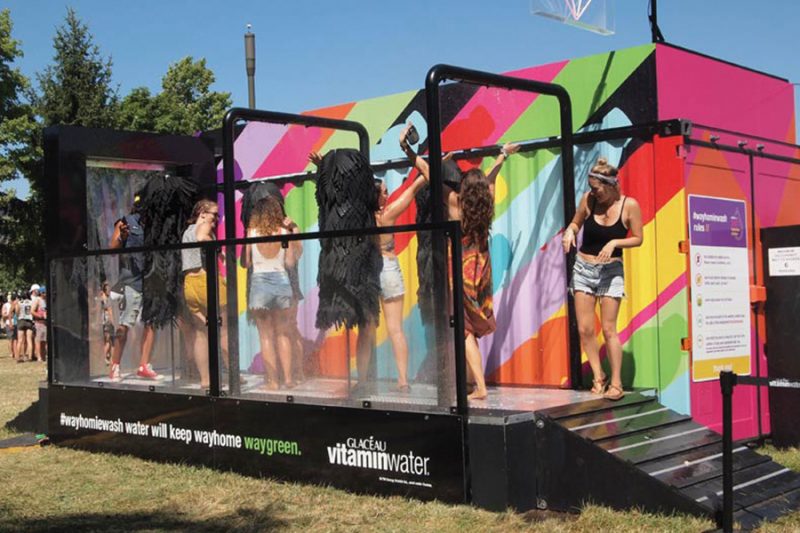
Vitaminwater human car wash
Many millennial festival goers love to be more involved, to create and share content, hence brands are also focusing on bringing physical experiences to the festival scene.
An excellent example is Mini Cooper at Lollapalooza in Chicago where festival goers could reserve a ride in the new Mini Paceman around various party spots. Media, influencers and even festival bands were keen to sample this cool service, turning it into a genuinely covetable experience for the image-obsessed Instagram generation.
For millennials, bloggers, influencers and celebrities, the festival offers a perfectly-packaged, shareable experience that can be linked to a hashtag and shared with millions over the globe in a matter of seconds. In fact, in many ways the evolution of influencer marketing at the festivals echoes the evolution of influencer marketing itself and it highlights a clear course for the future of the industry.
The popularity of influencer marketing on Instagram is increasing at such a fast pace that the global market is expected to grow from 1.3 billion U.S. dollars in 2018 to a $5-10 billion industry in the next few years.
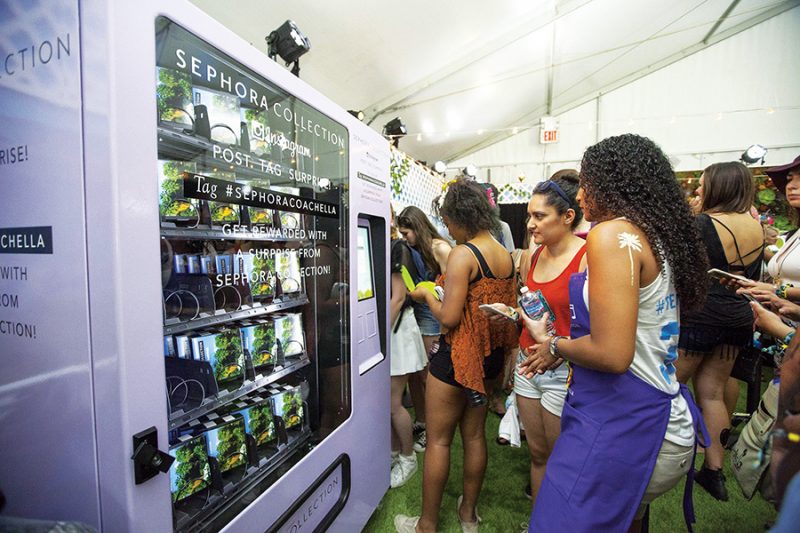
Welcome to Brandchella!
Music festivals, once bastions of threadbare style and simple resourcefulness, have become havens of luxury, none more so than Coachella, which this year drew more than 200,000 people to southern California. Since its inception back in 1999, the Coachella Valley Music and Arts Festival has morphed from a modest music and arts gathering into a multimedia bonanza, with a visual identity best described as a glamorous take on Woodstock-bohemian. It has become a hugely desirable destination, transitioning, as the LA Times perceptively puts it, from a scrappy Gen X rock outing to a perpetually sold-out fixture of late-millennial life in SoCal.
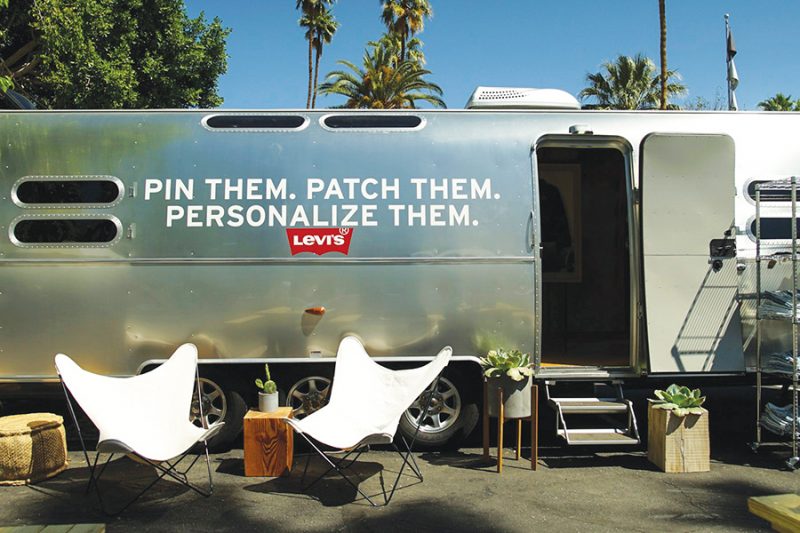
While the music performances may still get top billing, the lavish dinners, lodging, pop-ups, and modes of transportation have become as much of a draw, if not more so, than the festival itself. And that’s just the tip of the VIP iceberg! During the Coachella experiential marketing extravaganza in the past few years, H&M created an interactive ‘house’ featuring dreamlike photo moments made for Instagram; Victoria’s Secret had aura readings; Levi’s setup a tailor shop complete with on-site seamstresses and customisation options; Moschino had a Candy Crush-branded ball pit and Popsugar had gifting suites from Nordstrom, a 360-degree robotic camera, screenprinting and a person whose job it was to direct videos for guests to post on social media. Smaller players are there too, like New York-based jewellery designer Alexis Bittar who was selling her creations from a revamped vintage gold-plated Volkswagen called the Bittar Bus. This unique marketing technique fuses the old with the new and nods to the camper vehicles that were prevalent throughout festivals like Woodstock.
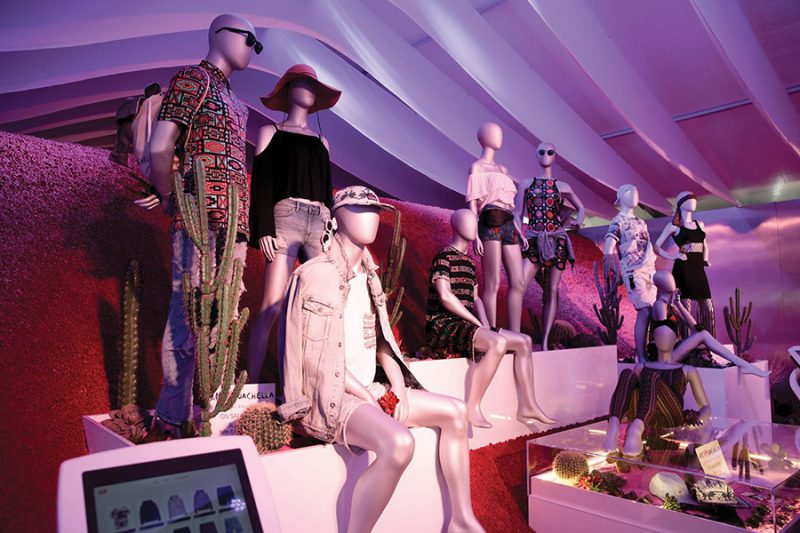
H&M pop up
The perfect brand activation especially given the desert heat for which the festival is known, the Sephora Coachella activation included desert-ready makeovers with complimentary make-up touch-ups, a braid bar, relaxing face mask bar and even DIY temporary hair colour. In 2019, luxury YSL Beauty also hosted its first Coachella activation with the eye-catching pop-up resembling a gas station with vintage convertibles and an on-site store equipped with a makeup vending machine and consultations with beauty experts.
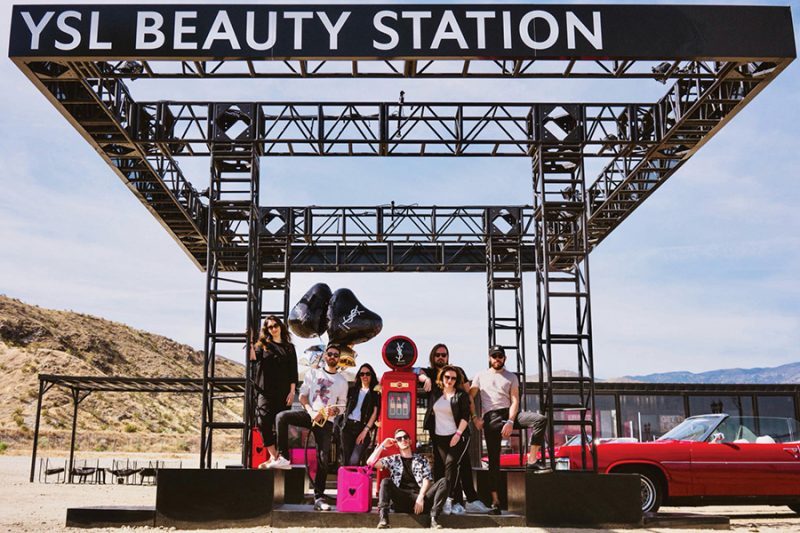
However, judging by the Instagram presence, it was Revolve, the Los Angeles-based, data-driven e-tailer and its network of very ‘influencer-y influencers’, that seemed to win the race with the right combination of cool venues, live music and, of course, top-tier influencers. The online clothing retailer has invested heavily in its brand activations at the festival, hosting multiple events and taking over an entire hotel by rebranding it #HotelRevolve in order to create a plethora of Instagrammable backdrops with pink neon signs, pool cabanas and a colourful Revolve-branded flower wall.
For Revolve, Coachella is a critical sales season, their own Black Friday, a place to gain an entire season’s worth of promotion in a week or two, with guaranteed social media exposure along the way.
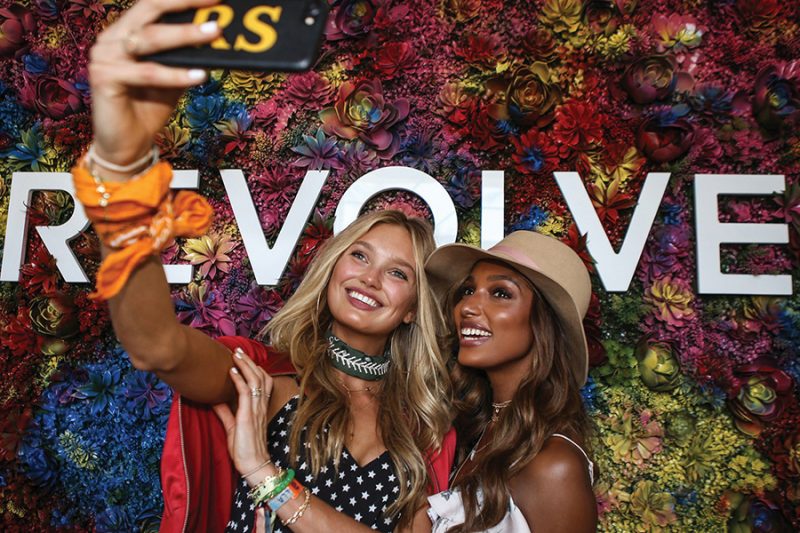
Revolve at Coachella
While Coachella is a massive three day festival with six separate stages all on its own, its splendour comes with its add-on stages like the Heineken House, sponsored by Heineken. The official brew of the Coachella for the 18th consecutive year returned in 2019 with a revamped Heineken House. What in the past has been an activation footprint with a walled structure and a club atmosphere this year morphed into a retro-inspired open beer garden concept with a striking slanted roof providing sought-after shade and the brand’s signature performance stage with an impressive lineup.
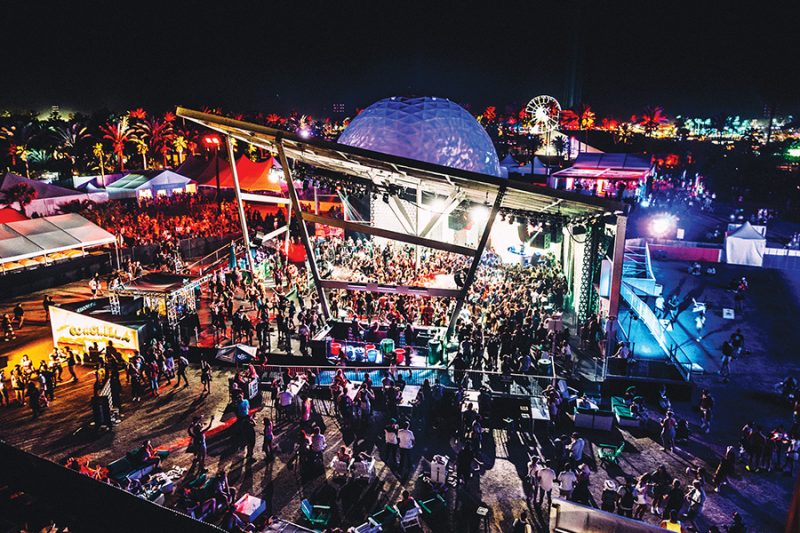
Heineken House
However, it’s not just fashion and beverage brands cashing in. Arguably, the best non-music thing at Coachella last year was HP’s Antarctic Dome, an 11,000-square-foot air-conditioned tent where attendees lined up for hours to enjoy a nine-minute highly memorable 360 degree audio-visual sensory experience in the midst of the festival. HP also created a 40 x 40 lounge space onsite, where attendees used HP products to design items such as festival-inspired bandanas and custom art pieces. By establishing a presence at Coachella, HP’s goal was to position its brand at the apex of music, art and technology, with product innovation underpinning all three.
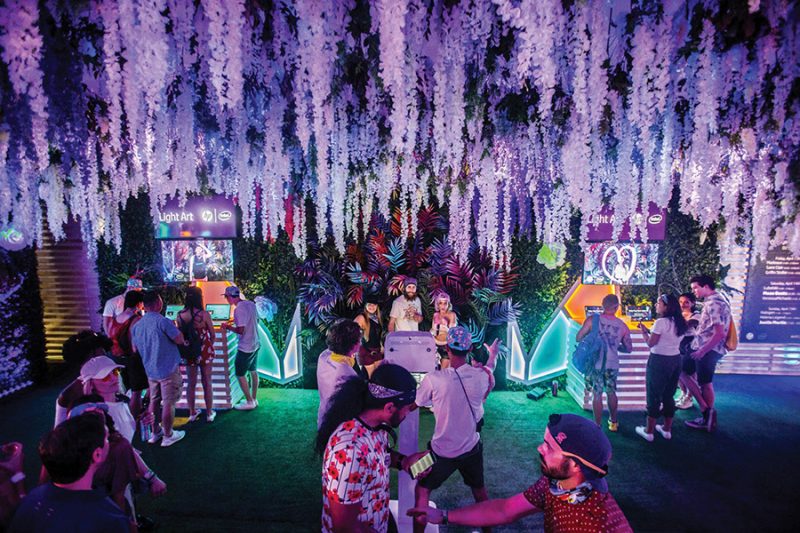
HP Dome Coachella
American Express ran Platinum House, a lush pop-up retreat, where its members could enjoy a guided meditation and SoulCycle-run fitness classes plus shop a capsule festival collection by cult streetwear brands while sipping cocktails. The official credit card of Coachella created the American Express Experience where you starred in your own mini-music video. What was fun about this was it had little to do, if anything, with actual American Express credit cards, certainly positioning AMEX as a fun, young brand as opposed to a bank that issues credit cards.
“We are increasingly focused on the millennials and we feel that festivals are the greatest way to reach that audience,” said an American Express spokesperson.
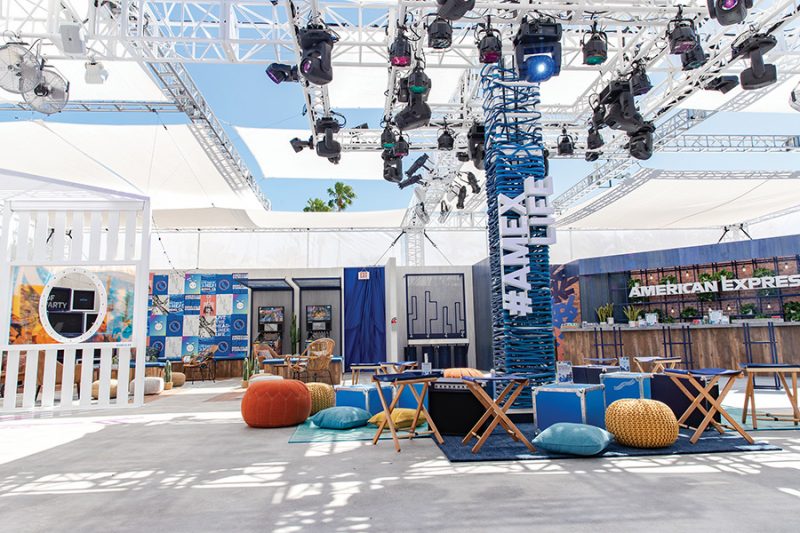
Knowing that modern day festival goers don’t want to rough it out in the elements, the Marriott International had an idea that no hotel brand had ever attempted before. Inspired by its W Hotels & Resorts in Dubai, Barcelona and Bali, their W Village experience at Coachella was an unrivalled, all-inclusive oasis located among the lush palm trees where those youthful, luxuriously inclined and music-loving guests enjoyed luxury yurts complete with morning yoga, maid turndown service, personal concierge, private bathroom, fully stocked minibar, wi-fi and the shuttle service.
As a proof of success, the Marriott Coachella activation was named the Most Original Campaign by LE Miami 2017 Rebels Awards that recognises hotel companies with extraordinary marketing that offers fresh approaches to connecting with travellers and takes a brand to the next level, from online content destinations to clever social media campaigns or an innovative series of events.
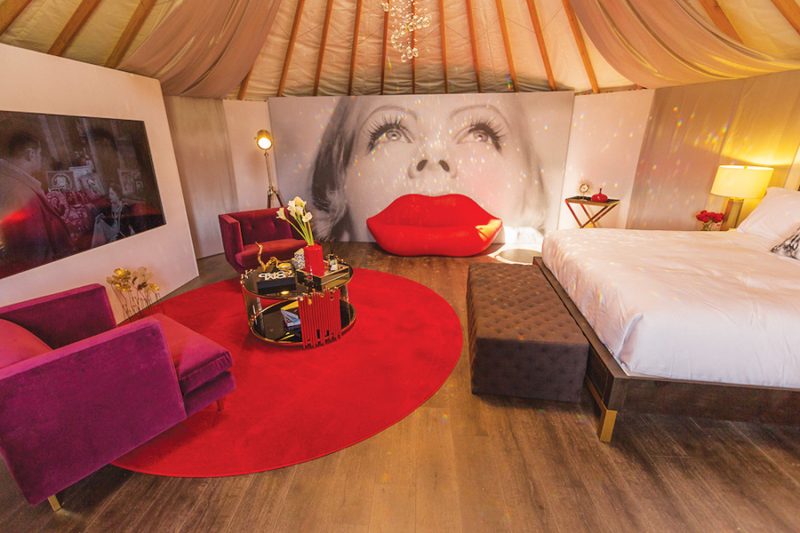
Brands going to music festivals need to hit the right notes, but if they are willing and able to become a part of the festival experience itself, the benefit is enormous.
After all, music does what brands want – forms memories, stirs emotion and unites people, or as the New York Times recently put it, “the non-disposable moments at festivals carry so much weight, they are unforgettable, watertight, locked-down emotional memories that, as a brand, you want to access and be associated with”. Inevitably though, with the rise of festival marketing comes increasing concern that the festival’s commercialisation will eventually kill the festival vibe. A decade ago, time before social media, festivalgoers had nothing but good vibes, shared memories and stories to take home. It was the one place that provided a rare opportunity to separate from society and submerge in another world, where you could be free to express yourself without judgment or consequence. Hopefully, those elements will not be completely lost and their existence still transcends all the challenges that might be happening at the top.



